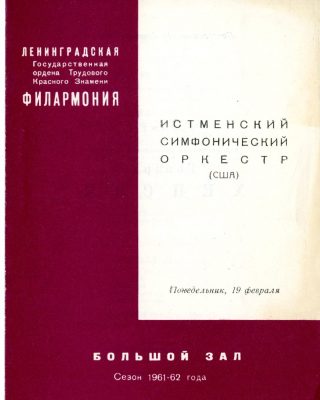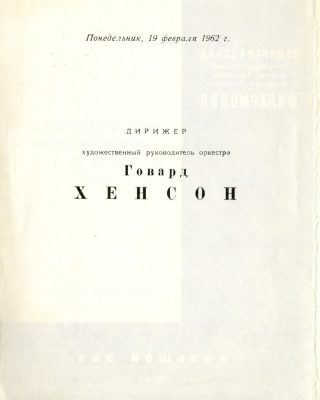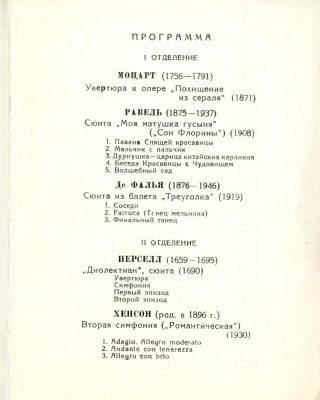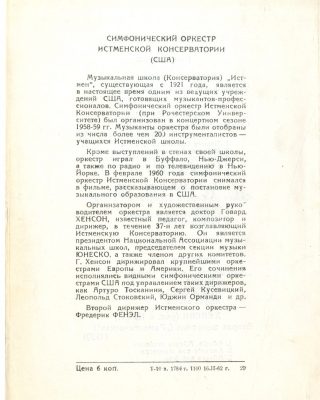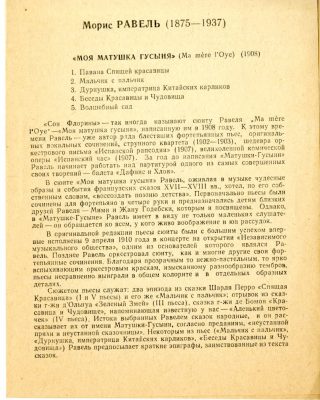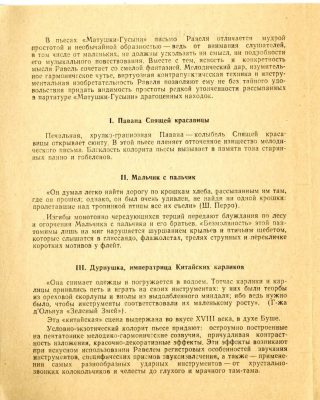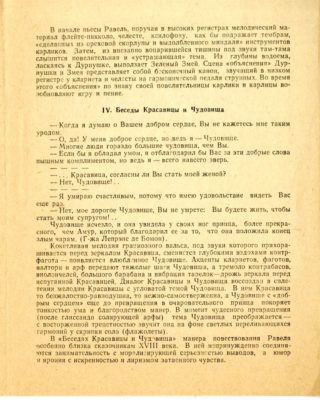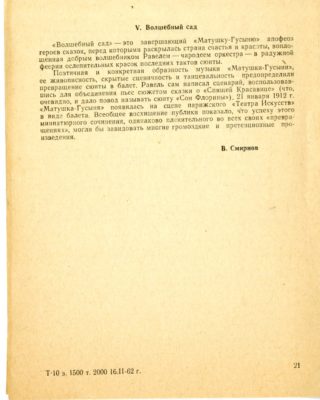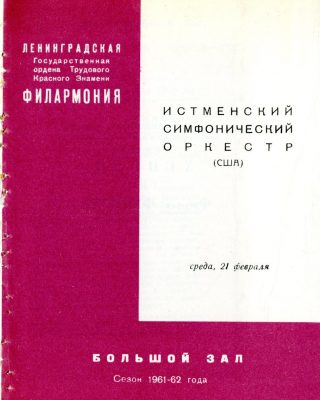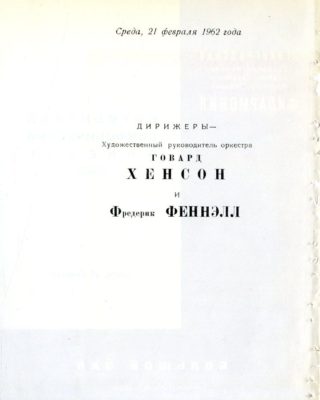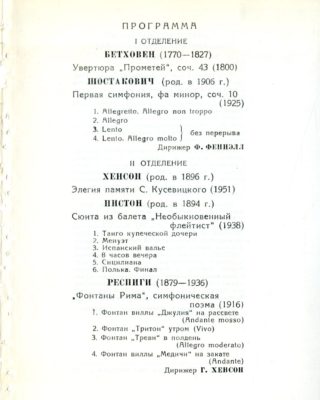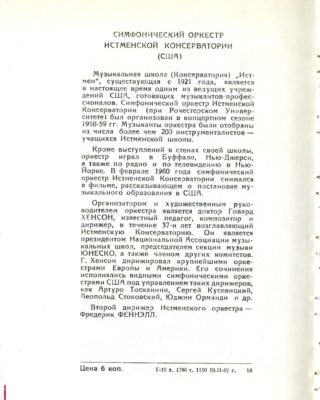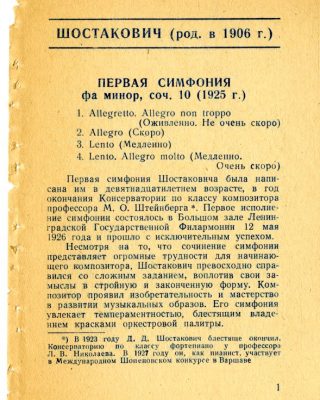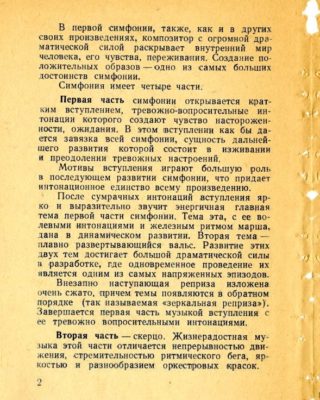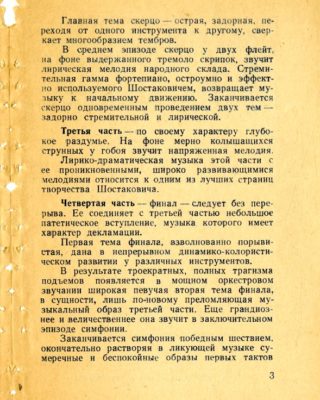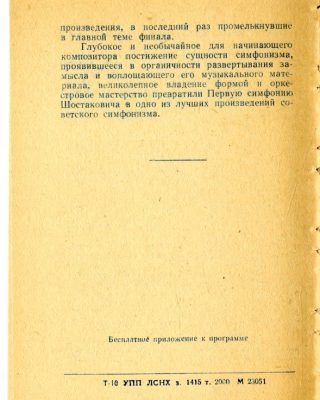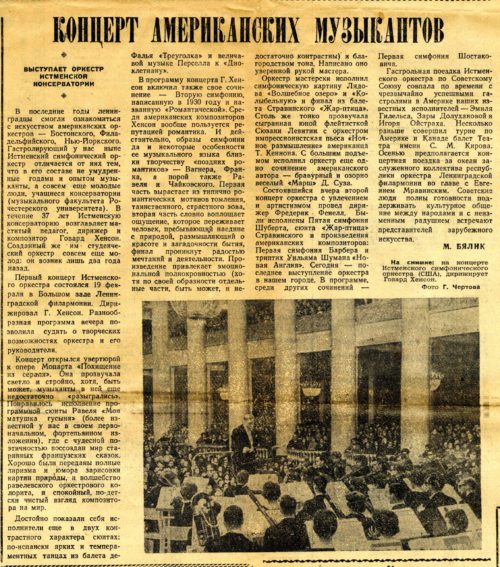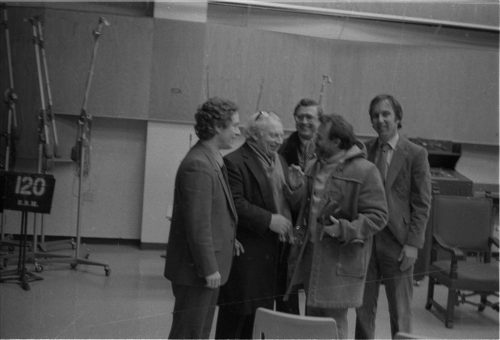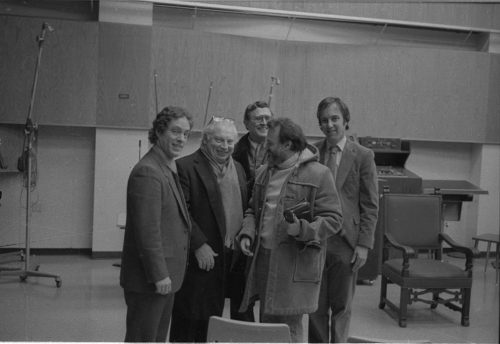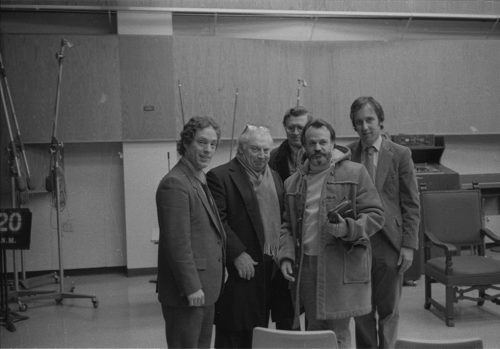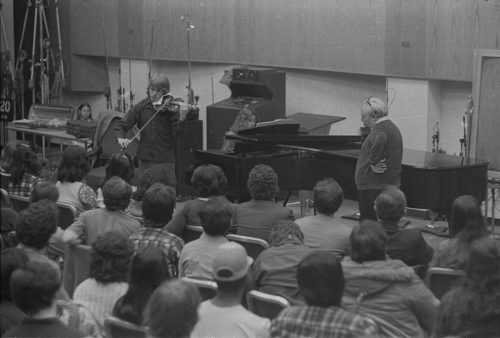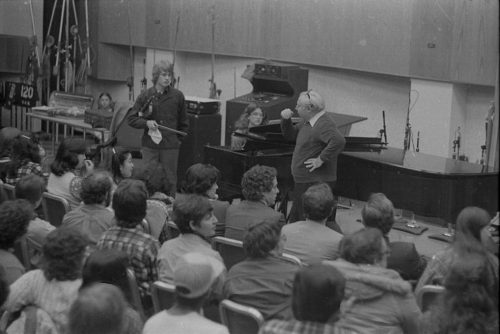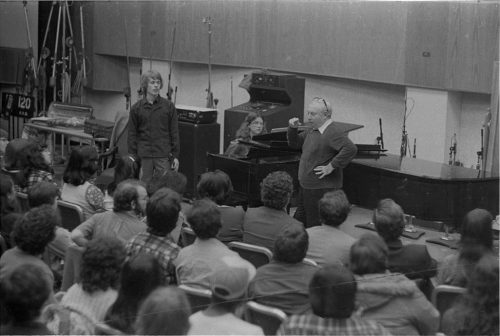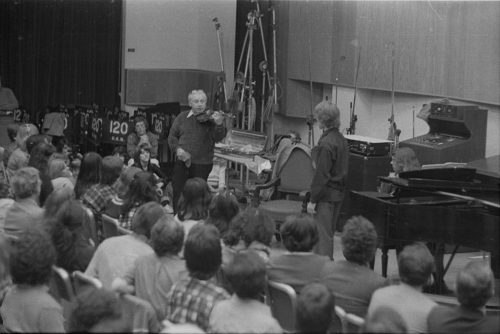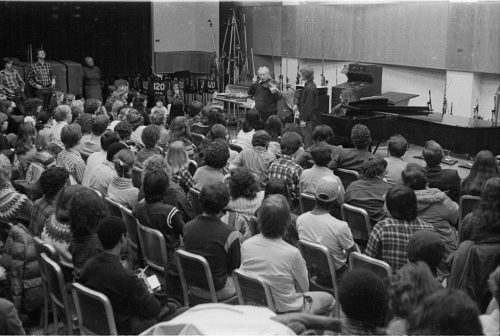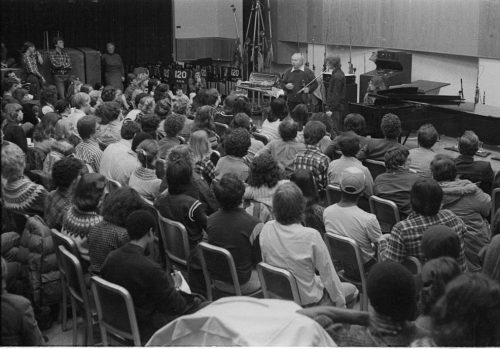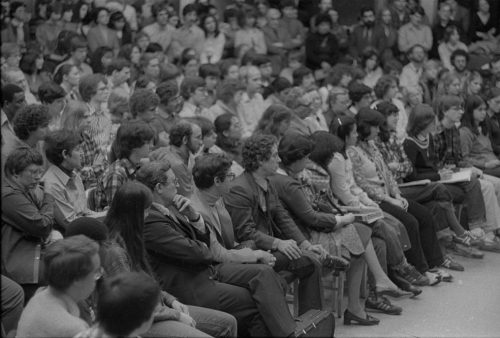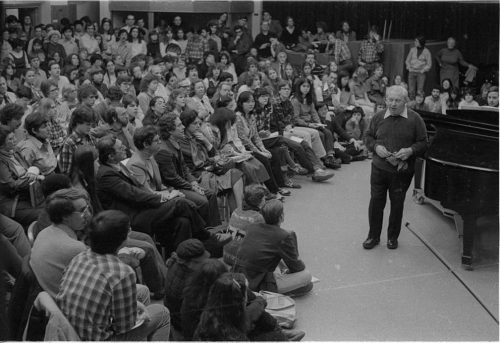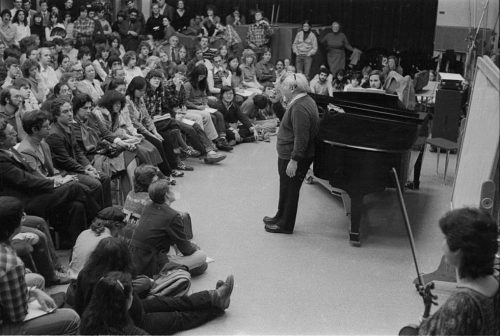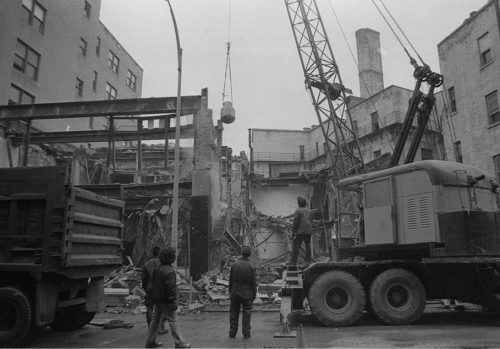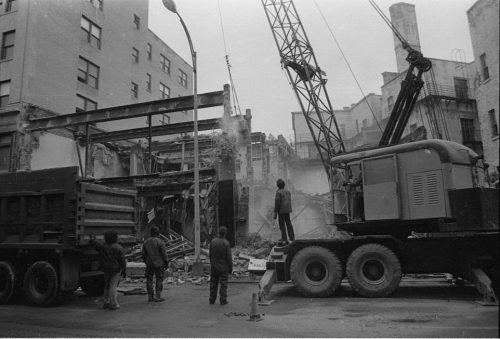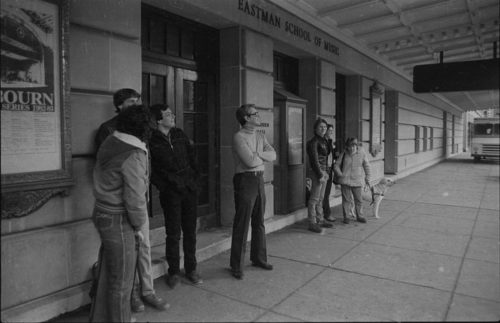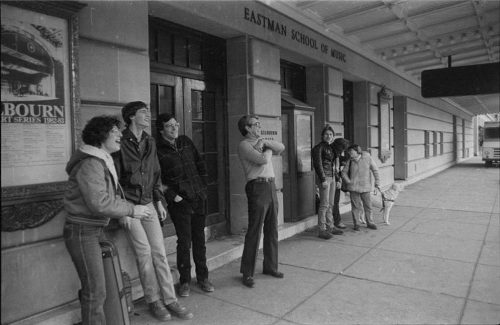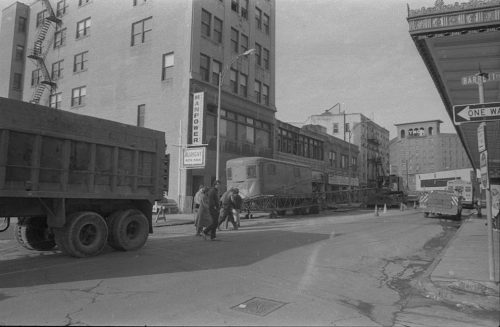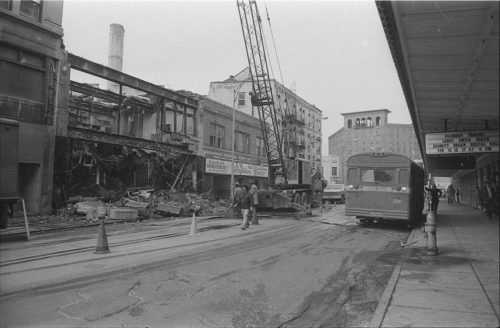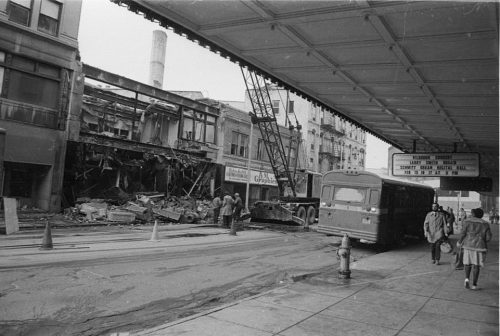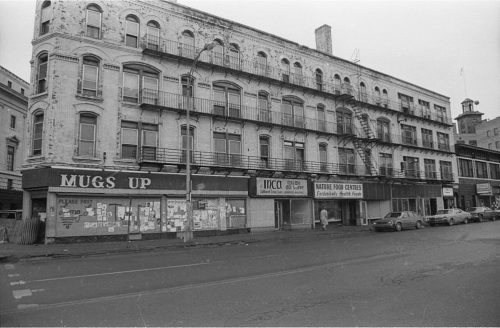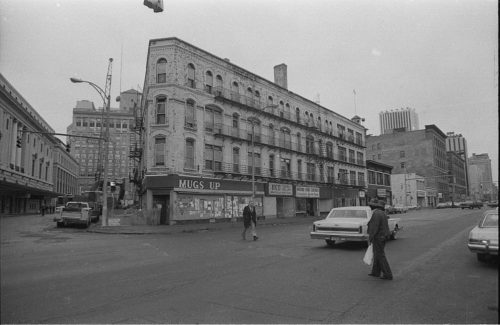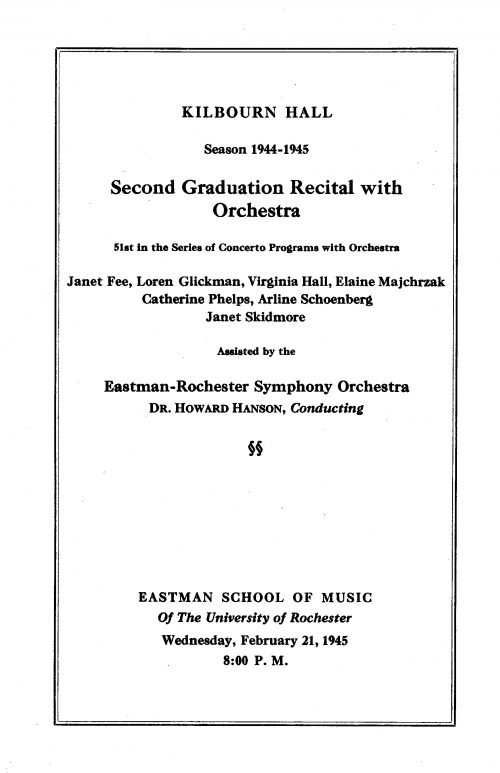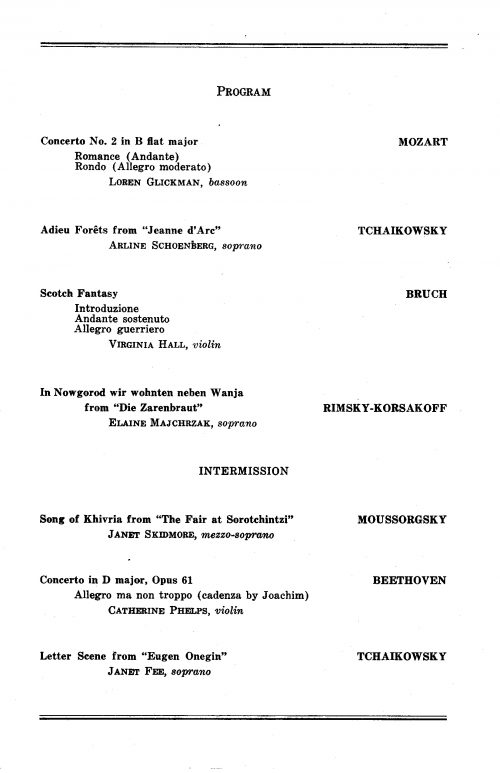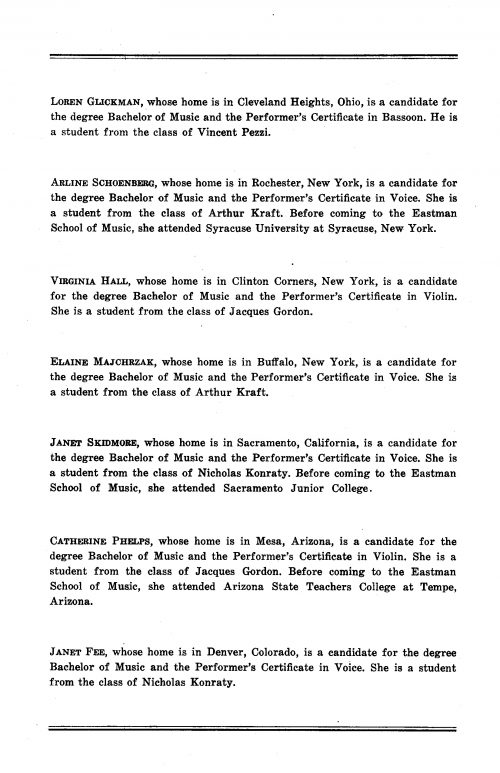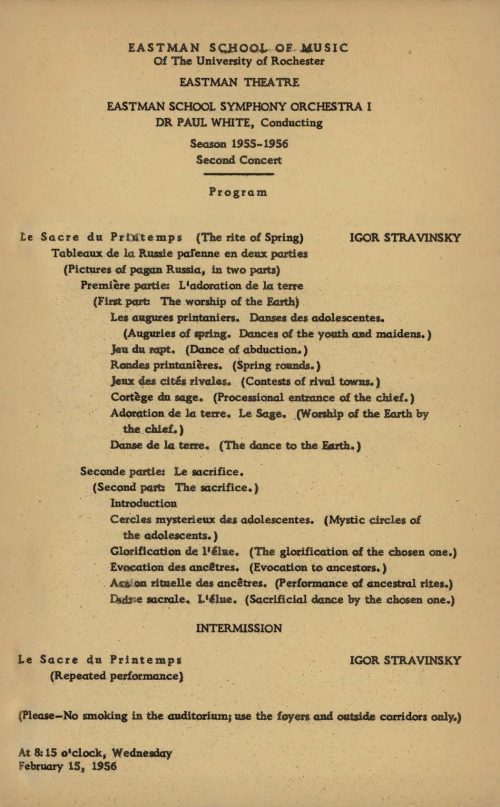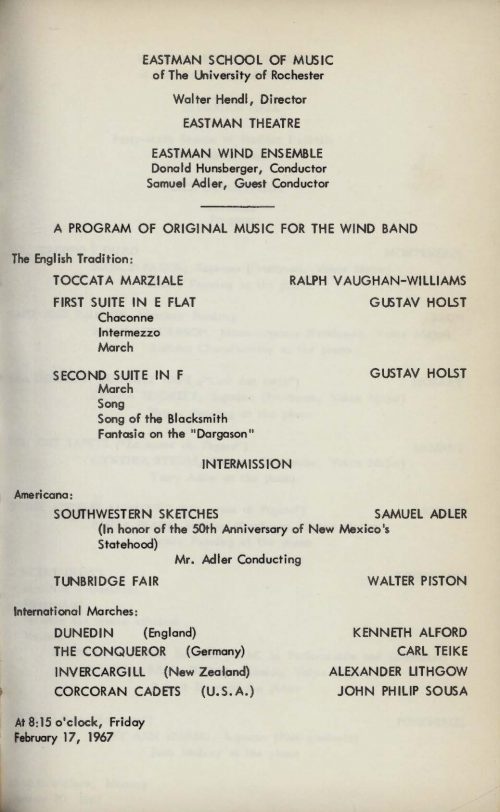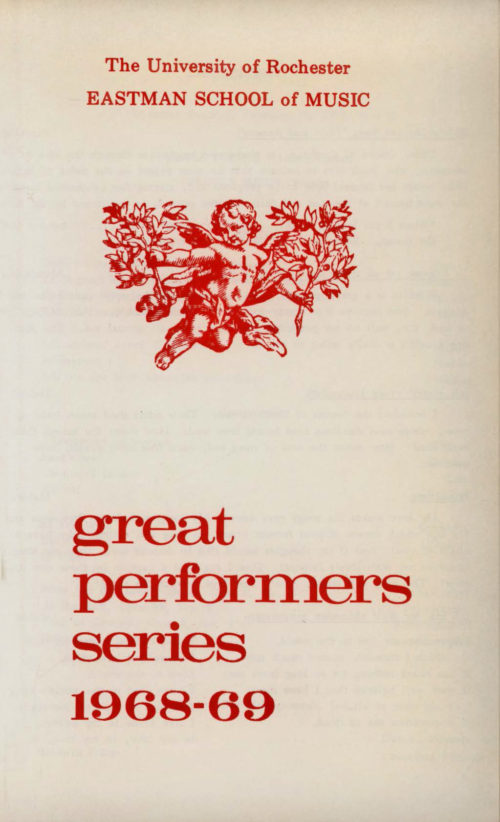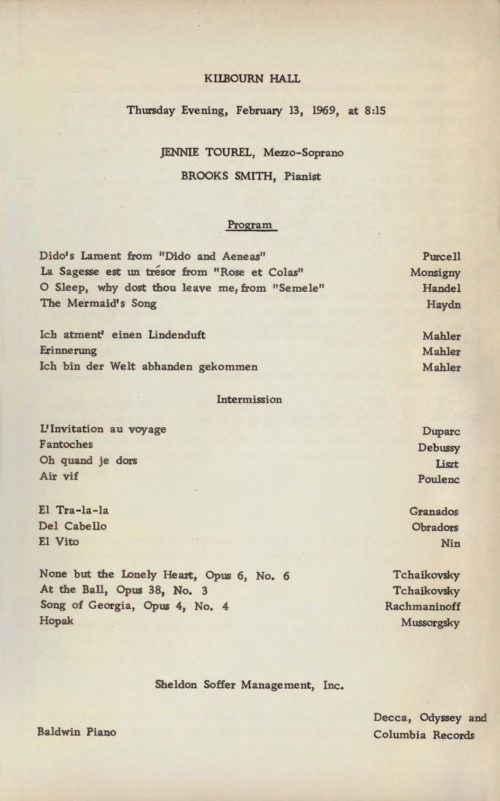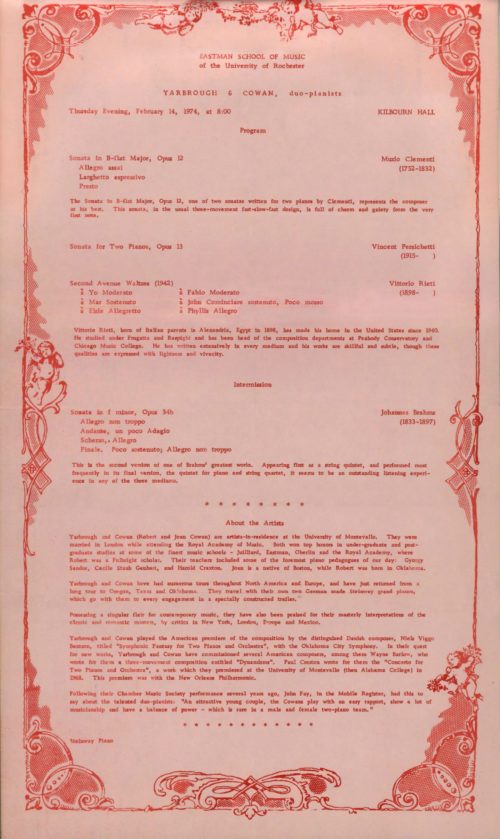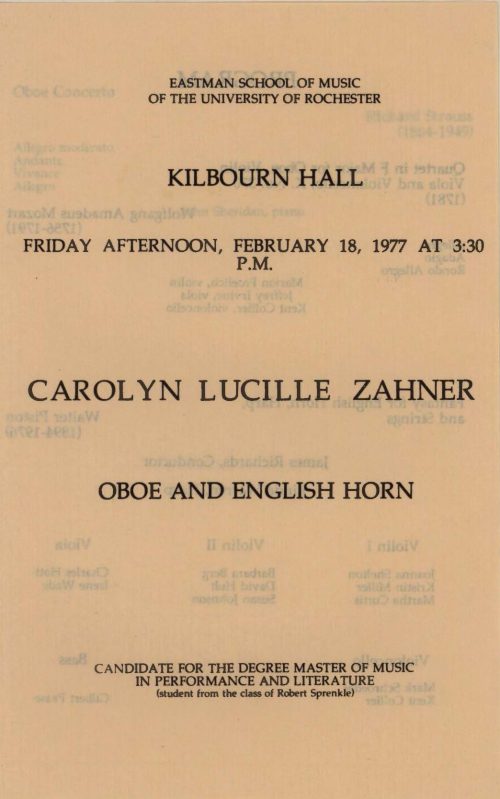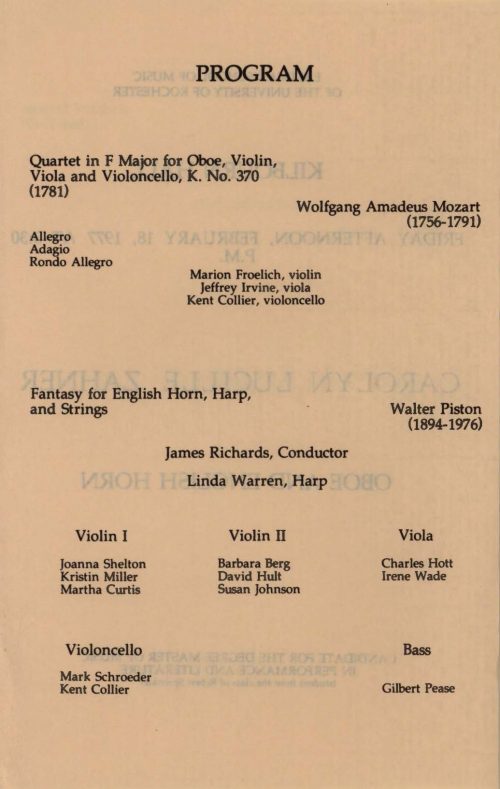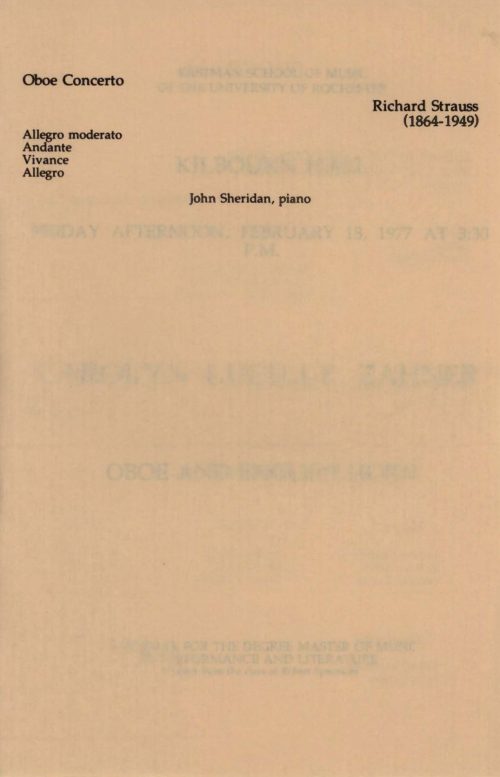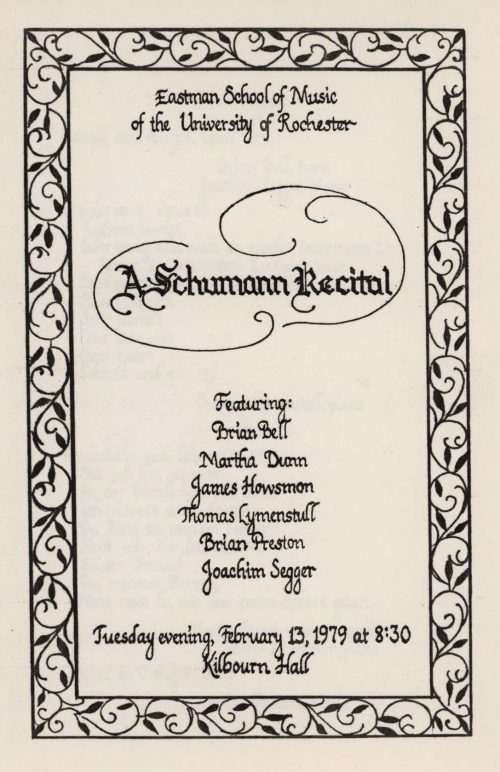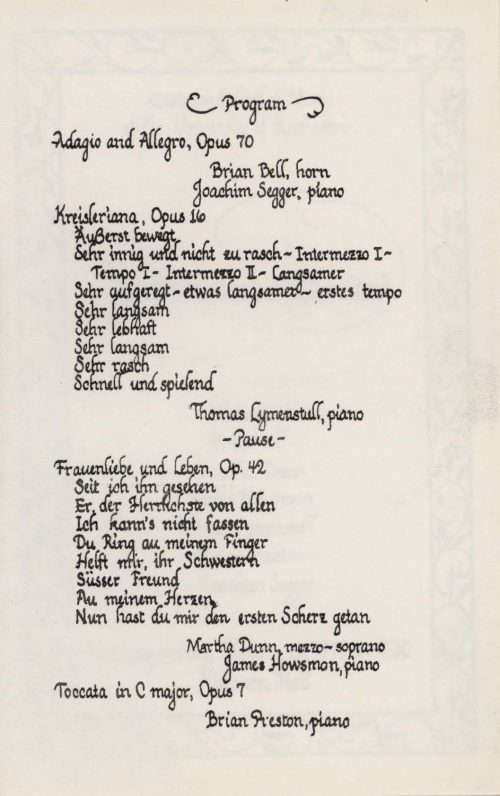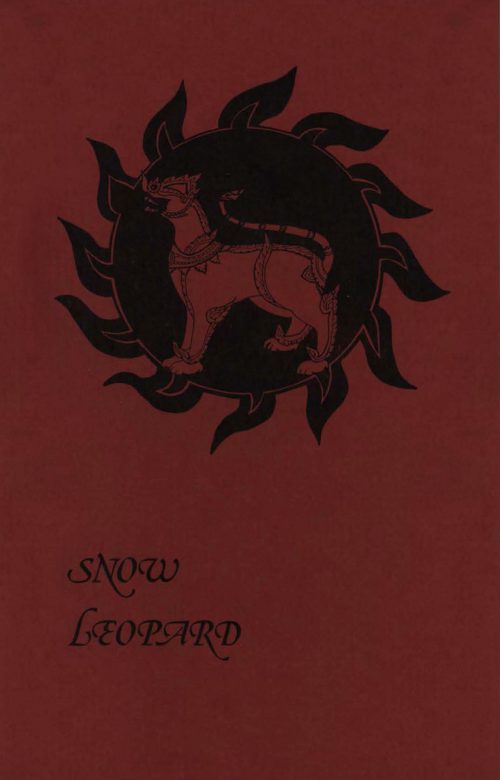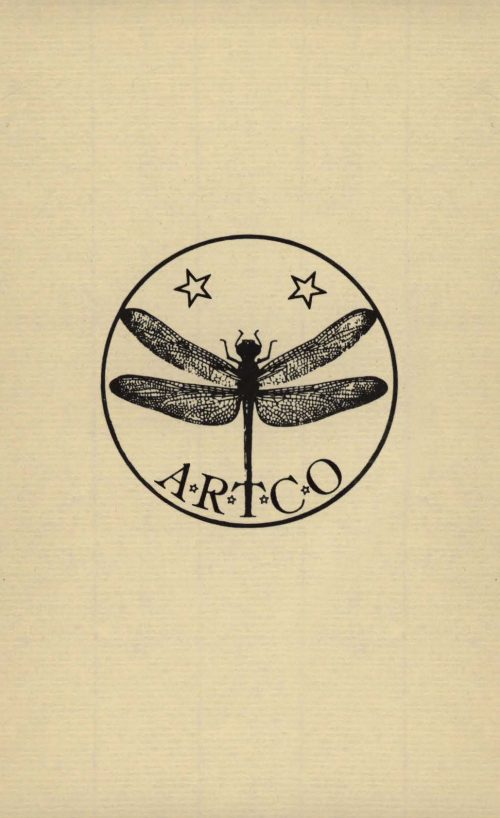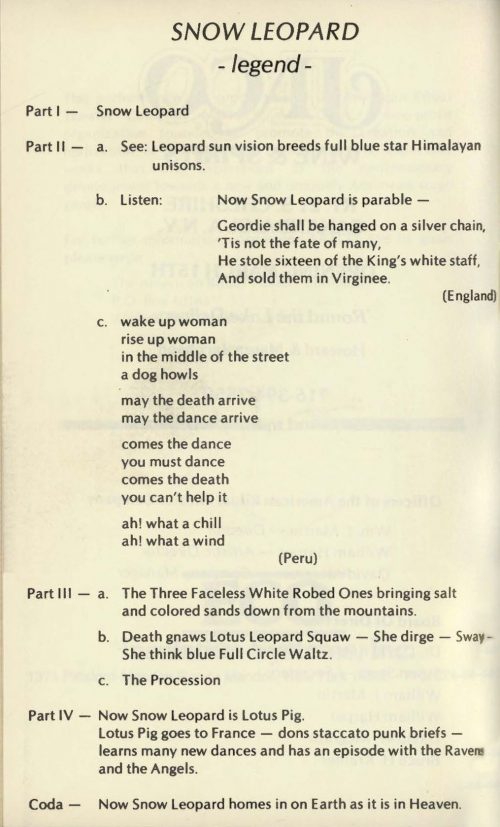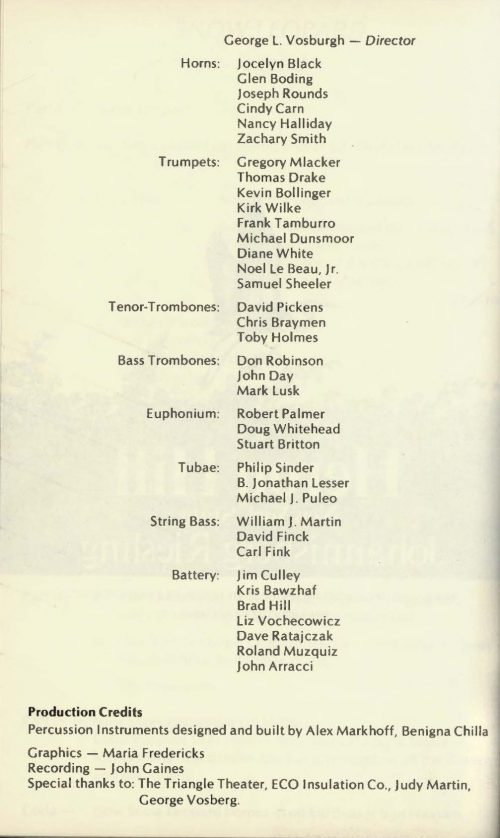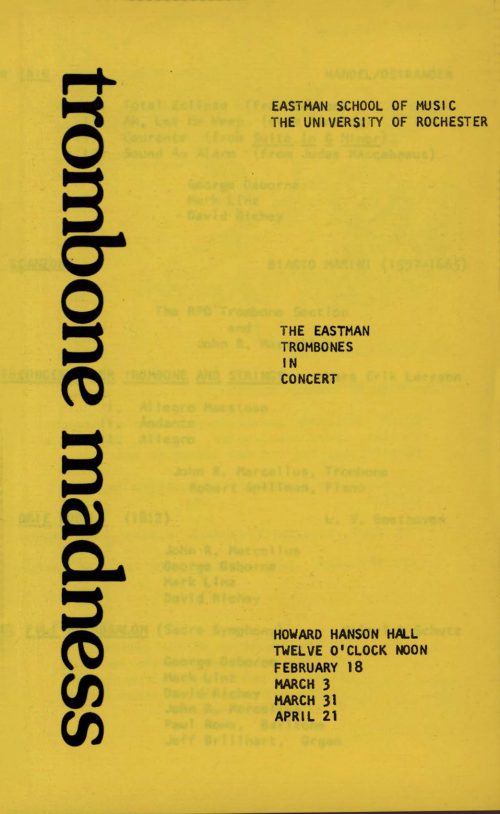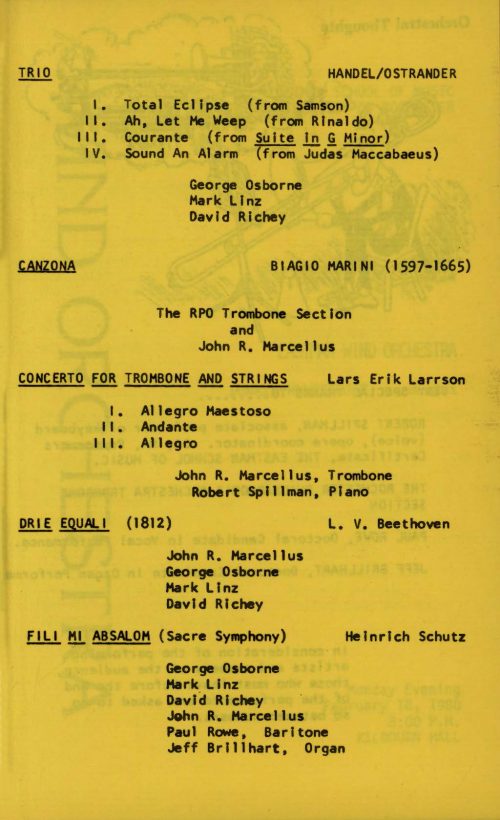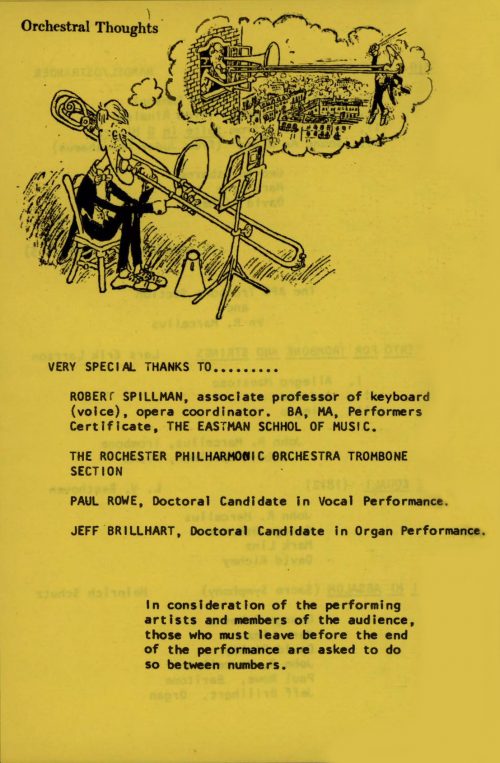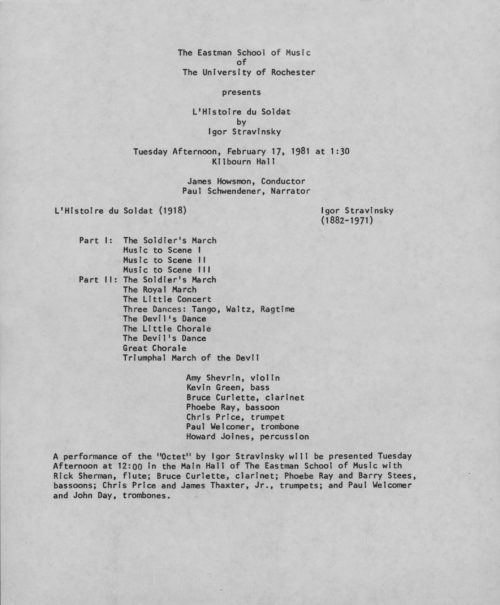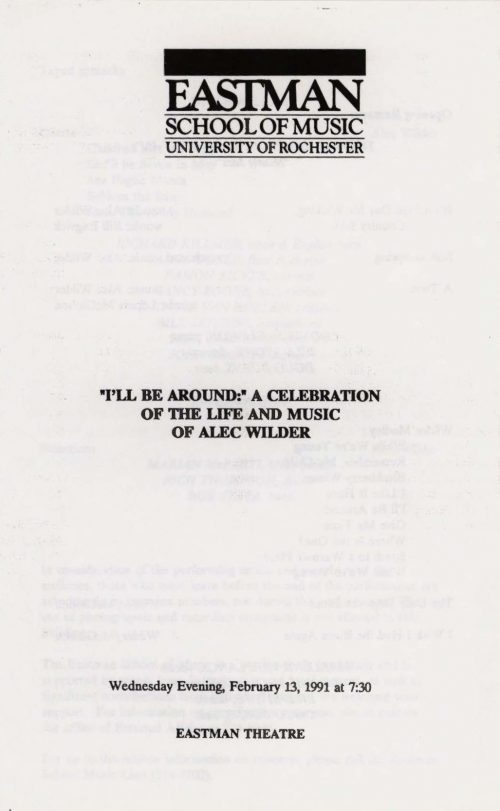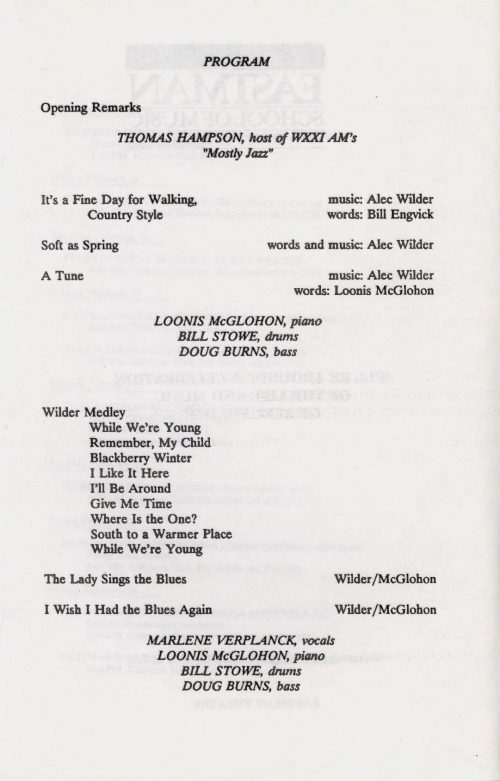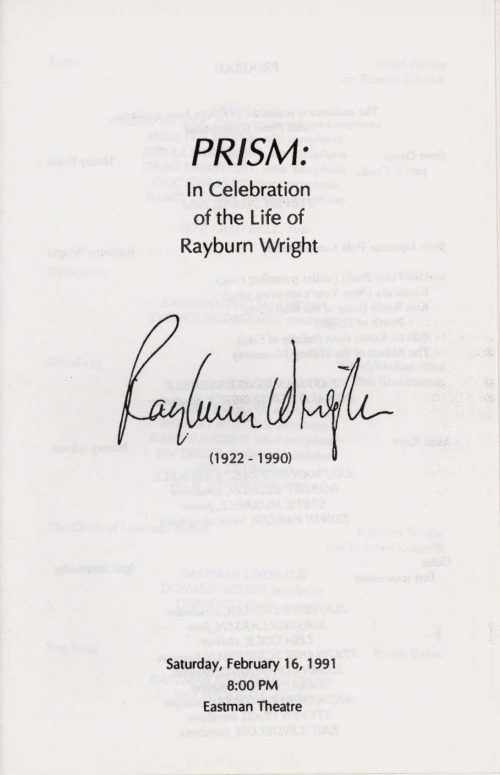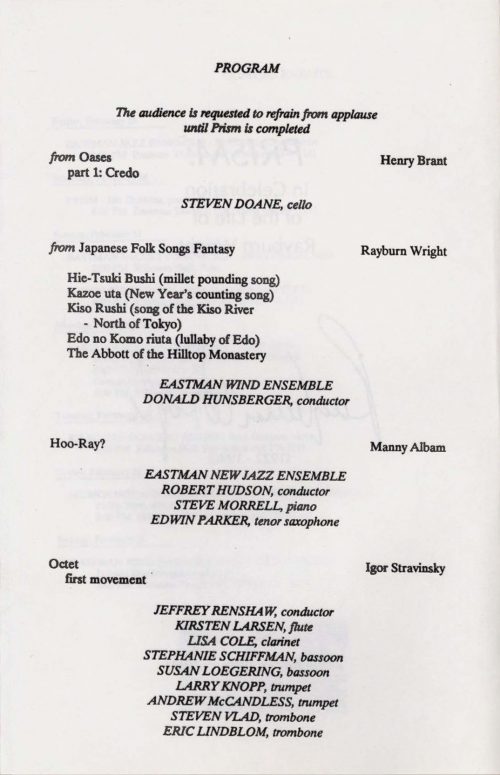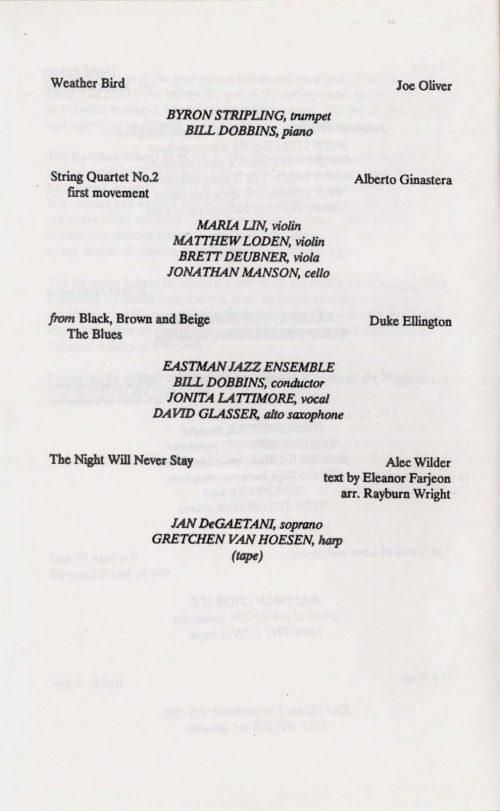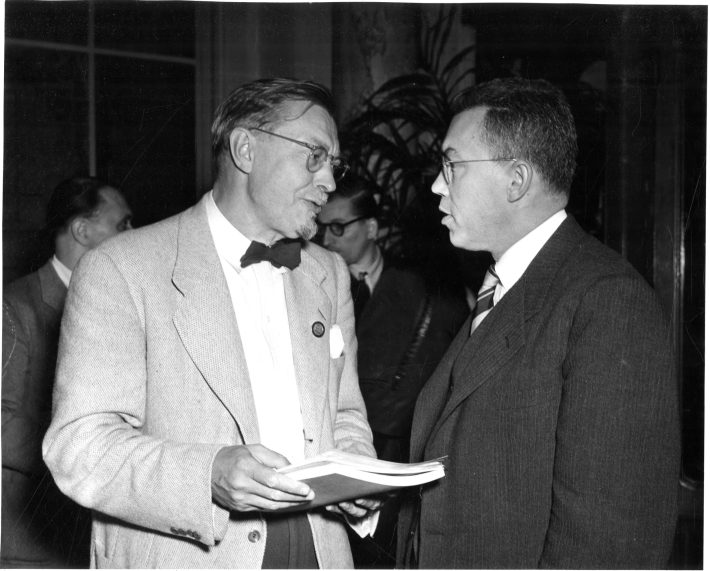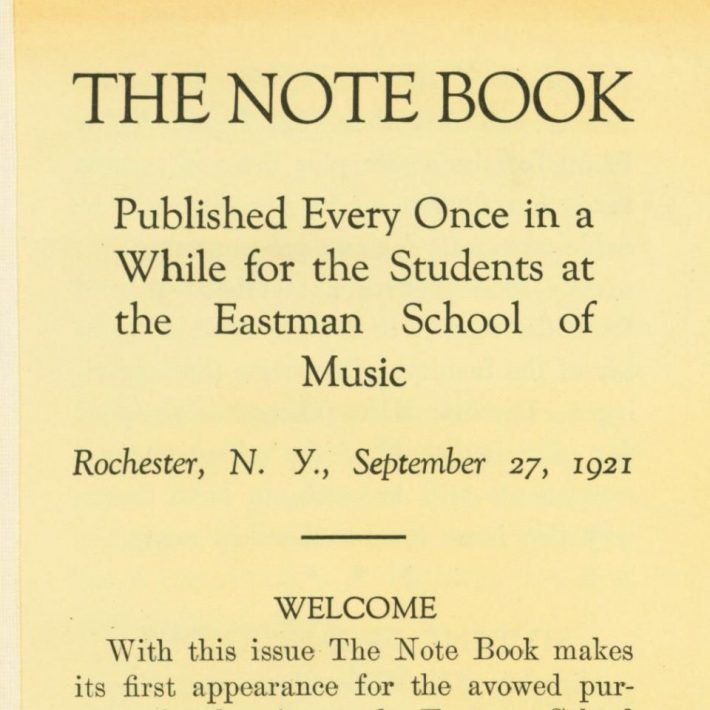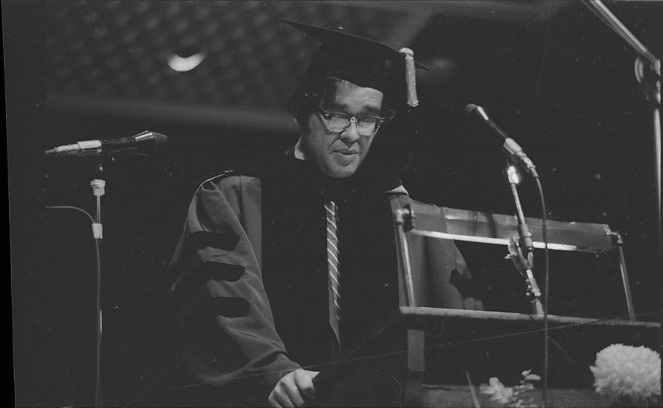Published on Feb 14th, 2022
1962: Eastman Philharmonia tour continuing
Sixty years ago this week, the members of the Eastman Philharmonia were approaching the end of their landmark three-month tour. The days in in mid-February found them in Kiev, where they spent four full days altogether, and then moving on to Leningrad for their last scheduled performances. Exactly at this time the Eastman Philharmonia and their accompanying entourage were joined by Mr. Hamilton B. Allen, Theater Editor for the Rochester Times-Union, which at that time was one of Rochester’s two daily newspapers. Mr. Hamilton was with the orchestra in Lvov and Kiev, and wrote several articles about the orchestra members’ activities in that part of the USSR, copies of which are preserved in scrapbooks in the Sibley Music Library vault. His stories read as though deliberately worded for an interested but general readership that would inevitably include readers who were not not well versed in matters of classical music and performance. Mr. Allen’s observations on logistics of travel in the Soviet Union were no doubt read with interest at this time when the realities of the Cold War meant that comparatively few Americans would ever journey behind the Iron Curtain. Mr. Allen’s reporting also underscored the ever-present realization that these young musicians were doing something that no other academic orchestra from the U.S.A. had ever done, a point that had already engendered a huge amount of pride back home in Rochester. One item of happy news that Mr. Allen shared was that two separate couples had announced their engagements during the tour.
As has been the case all along, the most vivid details of life during the tour have come from the travel journal of bassoonist Richard Rodean, BM ’62, MM ’64. Reading Mr. Rodean’s entries, one can appreciate the numerous ways that Philharmonia members were taking advantage of the opportunities to further themselves as musicians: seeking out music shops to expand their personal libraries with scores and recordings that were difficult to obtain back home; meeting and conferring with other instrumentalists and members of other orchestras whenever possible; and attending performances whenever time permitted. In addition, Philharmonia members regularly used whichever other acquired language(s) at their disposal to bridge the language barrier; in Mr. Rodean’s case, that was German, and he appears to have used it effectively in several destinations throughout the tour. While in Kiev, Mr. Rodean met with the bassoon instructor from the city conservatory and visited with the bassoon students. When the Eastman Philharmonia gave a concert later that evening, one of the students attended the concert and made a gift of music to Mr. Rodean, a gesture that the latter deeply appreciated. Mr. Rodean also recorded that Dr. Fennell concluded the Philharmonia’s last rehearsal in Kiev by conducting the orchestra members in the closing bars of “The Great Gate of Kiev” from Mussorgsky’s Pictures at an Exhibition “. . . just to be able to say we played it in Kiev.” Also in Kiev, several members of the Philharmonia attended a performance of the Leningrad Philharmonic Orchestra, which was just then travelling on tour; the concert featured featuring Mstislav Rostropovich as soloist in Prokofiev’s Symphony-Concerto for Cello and Orchestra; both orchestra and soloist left a huge impression on Mr. Rodean. He also commented on the orchestra members’ manner of entering and leaving the stage in a “totally uniform” manner (“It was all done very formally”), so different from American orchestras’ practice of the musicians entering the stage at will and warming up on-stage. The following morning, members of the Leningrad Philharmonic attended the Eastman Philharmonia rehearsal.
On February 17th the Philharmonia members flew to Leningrad. Immediately upon arrival, Mr. Rodean sought out a music store to continue his music acquisitions. The following morning he spotted composer Dmitri Kabalevsky at breakfast; the renowned composer happened to be a guest in the same hotel at the very same time. Sightseeing in Leningrad included all of the major sites: on February 19th, the Fortress of Peter the Great; St. Isaac’s Cathedral; the Decembrists’ Square (today known as the Senate Square); the Palace Square (which is the city’s central square); the St. Nicholas Naval Cathedral; and then on February 20th, spending the bulk of the day at the Hermitage. As he had done in other cities, Mr. Rodean recounted taking a walking tour on his own to explore the city of Leningrad.
The Eastman Philharmonia gave three concerts in Leningrad—on the evenings of February 19th, 20th, and 21st. These were the last scheduled performances of the tour, the orchestra’s farewell to their Russian audiences. Next stop: Moscow.
► program, Leningrad, February 19, 1962
► program, Leningrad, February 21, 1962
1982: Isaac Stern master class
► Violinist Isaac Stern enjoying conversation with Eastman School faculty members. From left to right: Charles Castleman, Isaac Stern, Zvi Zeitlin, RPO Music Director David Zinman, Donald Weilerstein. R3063-6A; R3063-7A; R3063-9A.
► Violinist Isaac Stern working with an Eastman violin student during a master class in Room 120. R3064-8; R3064-14; R3064-15; R3064-19; R3064-21; R3064-23.
Forty years ago this week, another distinguished artist drew a capacity crowd during a scheduled visit to the Eastman School of Music. On February 19th, 1982, renowned violinist Isaac Stern (1920-2001) gave a master class in Room 120 (today the Ray Wright Room). Mr. Stern’s life and reputation require no introduction here. At the time of this Eastman School visit, Mr. Stern was continuing to enjoy much favorable media coverage for his work in the 1979 documentary film From Mao to Mozart: Isaac Stern in China, which had won the Academy Award for Best Documentary Feature in 1981.
► Photos by Louis Ouzer. Master negatives nos. R3063, R3064, R3066.
► Violinist Isaac Stern addressing the assembled listeners during a master class at the Eastman School on February 19th, 1982. R3066-33; R3066-34; R3066-36.
1983: Demolition on Gibbs Street
► The machinery of demolition. Aged properties on Gibbs Street begin facing the wrecker’s ball in these photos taken on February 16th, 1983. R3162-6; R3162-10.
► Onlookers outside the Eastman School of Music react as they watch the demolition work in progress on the opposite side of Gibbs Street. R3165-11A; R3165-12A
Thirty-nine years ago this week, the complexion of Gibbs Street began to change as the block across the street from the Eastman School of Music — the block bounded by East Avenue to the south and by Main, Gibbs, and Chestnut Streets to the north, east, and west — began to be cleared of its buildings. The demolition of the properties on this city block was a significant step in Rochester’s downtown revitalization and urban renewal of the 1980s. Moreover, clearing this city block represented a huge prospect for the Eastman School with the promise of a new, modern home for the Sibley Music Library. When the block had been cleared of all of the existing properties, the ground would be graded and seeded until definite plans had been laid for future development.
At the heart of the initial discussions around this work was the need for a new building for the Sibley Music Library, which had occupied a Depression-era building on Swan Street since 1938. The growth of the SML’s collections, and the increasing demand on the SML’s resources and services in the face of climbing ESM enrollment, had visibly strained the SML building’s infra-structure and had threatened the efficient delivery of library services. Staff members had had to resort to storing books, scores, and archival collections in the basement and in remote locations for want of shelf space. Such had been the reality at the dawn of the decade of the 1970s; now, in early 1983, the prospect of improvement was at last on the horizon.
At the time that demolition began, plans for a new building on this city block were just one component of a larger project that was being called Metro Center. The new Metro Center would encompass an actual district of downtown Rochester with the Eastman School at its heart, and would offer retail, commercial, and entertainment opportunities around the Eastman School. As plans for the Eastman Place building (today Miller Center) were developed, the concept of the plan was adjusted and the name Metro Center was dropped, but the understanding that revitalization of this part of downtown with the central purpose of serving the Eastman School’s needs remained.
The Gibbs Street demolition work was promoted to the extended Eastman School community in the April, 1983 issue of Eastman Notes).
► Photos by Louis Ouzer. Master negatives nos. R3162, R3164, R3165.
► Three shots of demolition work on Gibbs Street taken from the south side. Note that Barrett Alley (between the Eastman School and Messinger Hall buildings) once had a street sign. R3164-4; R3165-19A; R3165-20A.
► Two shots of the corner of Main and Gibbs Streets, taken from the north, before demolition of this side of the city block. The site of the old Mugs Up café is now the site of the Miller Center Courtyard where a sculpture of the William Warfield is mounted.R3162-15; R3162-16.
The Weekly Dozen
In this week’s “Weekly Dozen” we recognize an interesting Graduation Concert with Orchestra that featured four vocalists all performing Russian opera (most likely due to the influence of Russian-born Nicholas Konraty on the Voice Department faculty); distinguished guest artists in voice and duo piano; a performance of a dramatic legend; celebrations of the lives of two men — one a conductor and arranger, the other a composer and author — who made singular contributions to life in and around the Eastman School; and some superlative student performances such as grace the Eastman concert calendar each week of the semester.
►February 21, 1945: Second Graduation Concert with Orchestra
►February 13, 1969: Jennie Tourel, soprano with Brooks Smith, pianist
►February 18, 1977: Carolyn Lucille Zahner, oboe and English horn
►February 13, 1979: A Schumann Recital
►February 15, 1979: Snow Leopard
►February 13, 1991: Alec Wilder Celebration
►February 16, 1991; PRISM: In celebration of the life of Rayburn Wright

